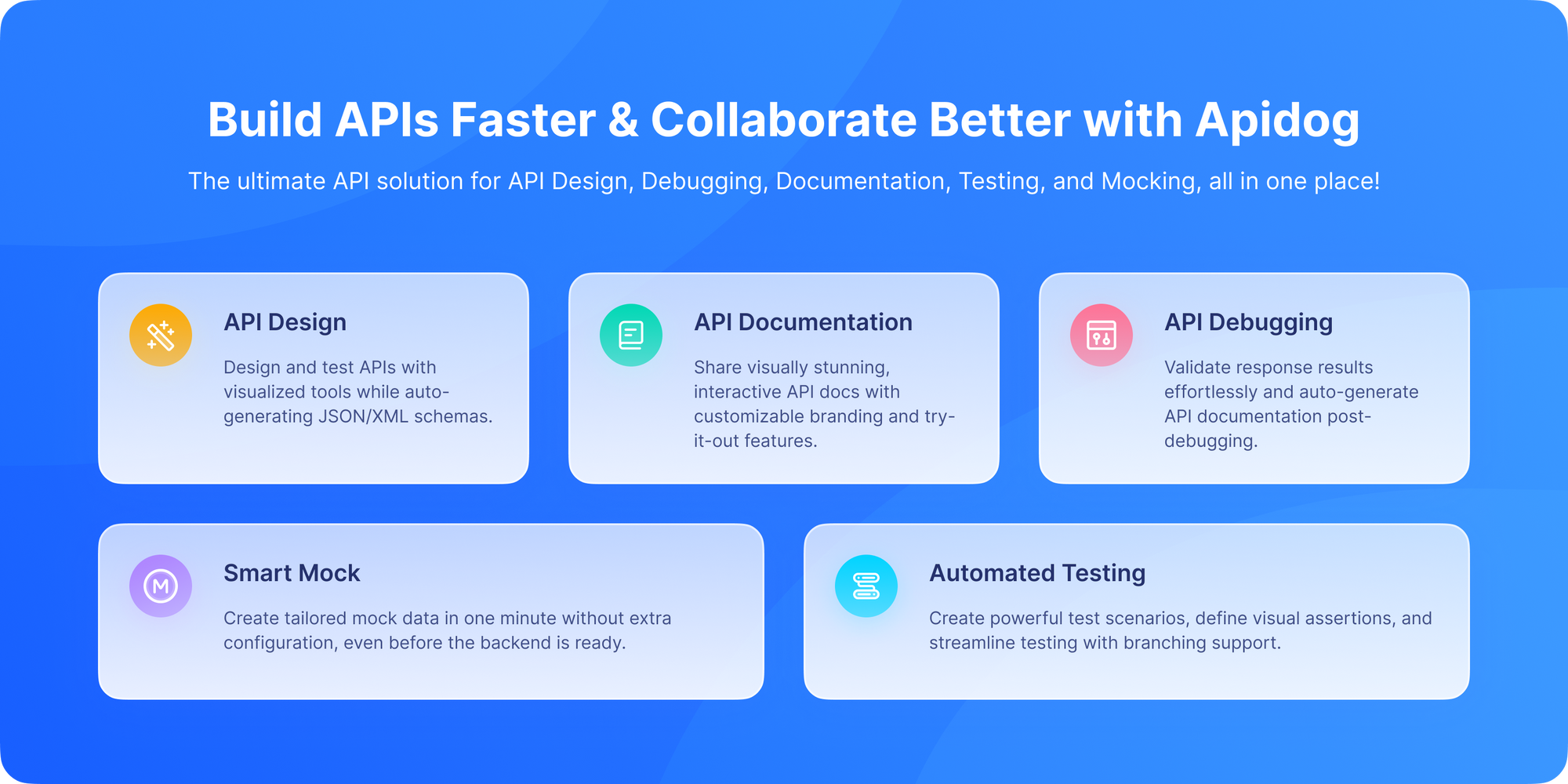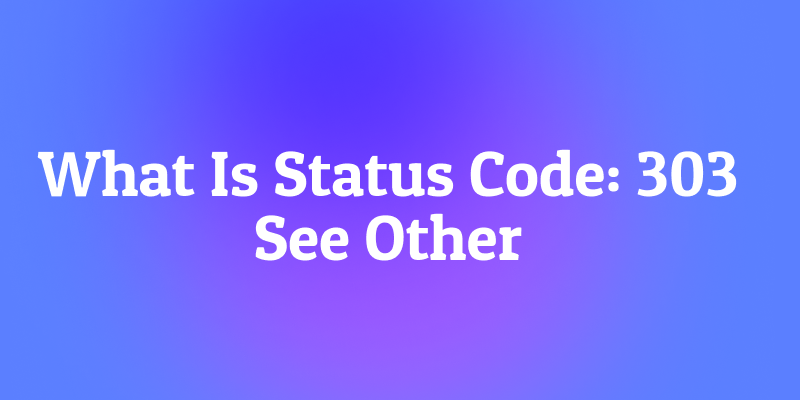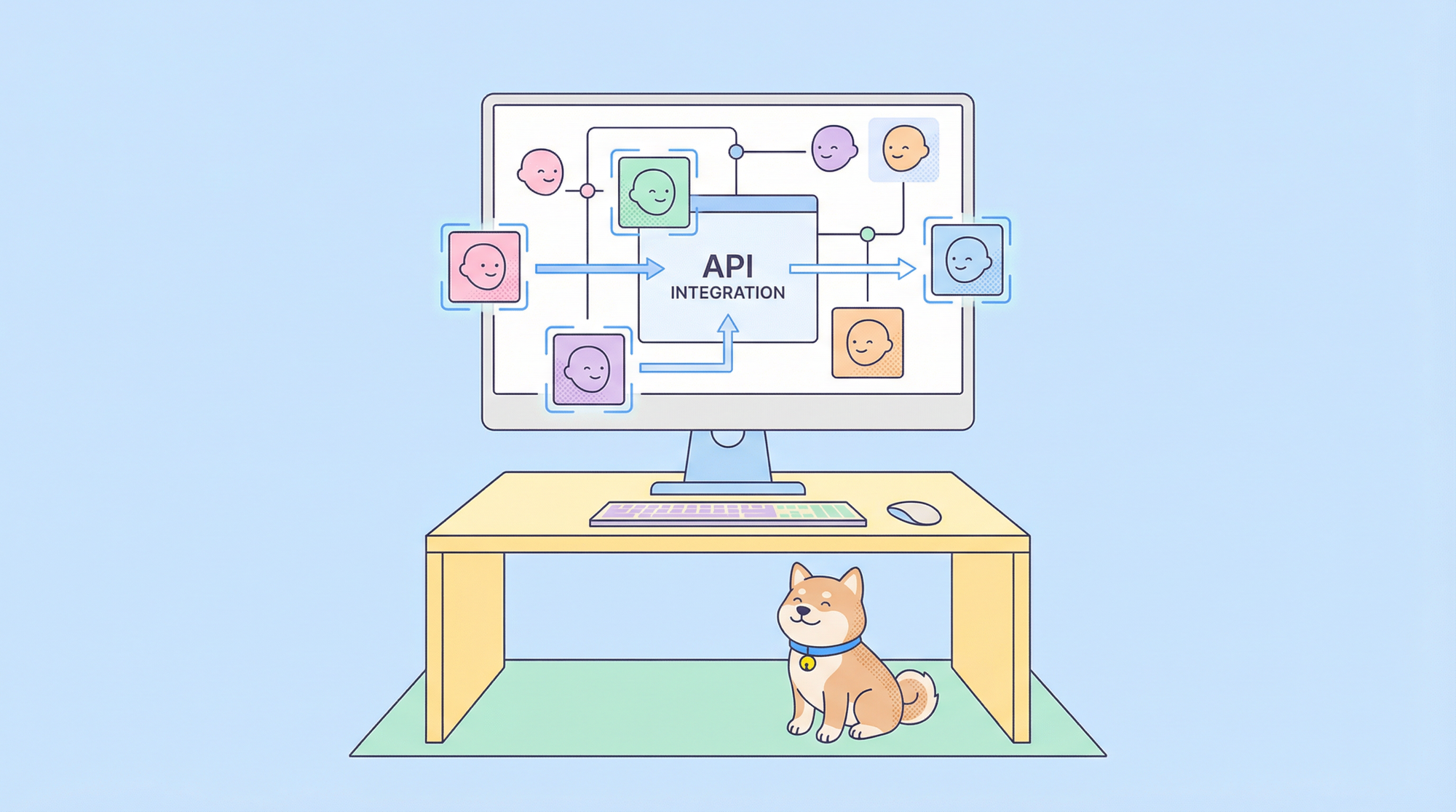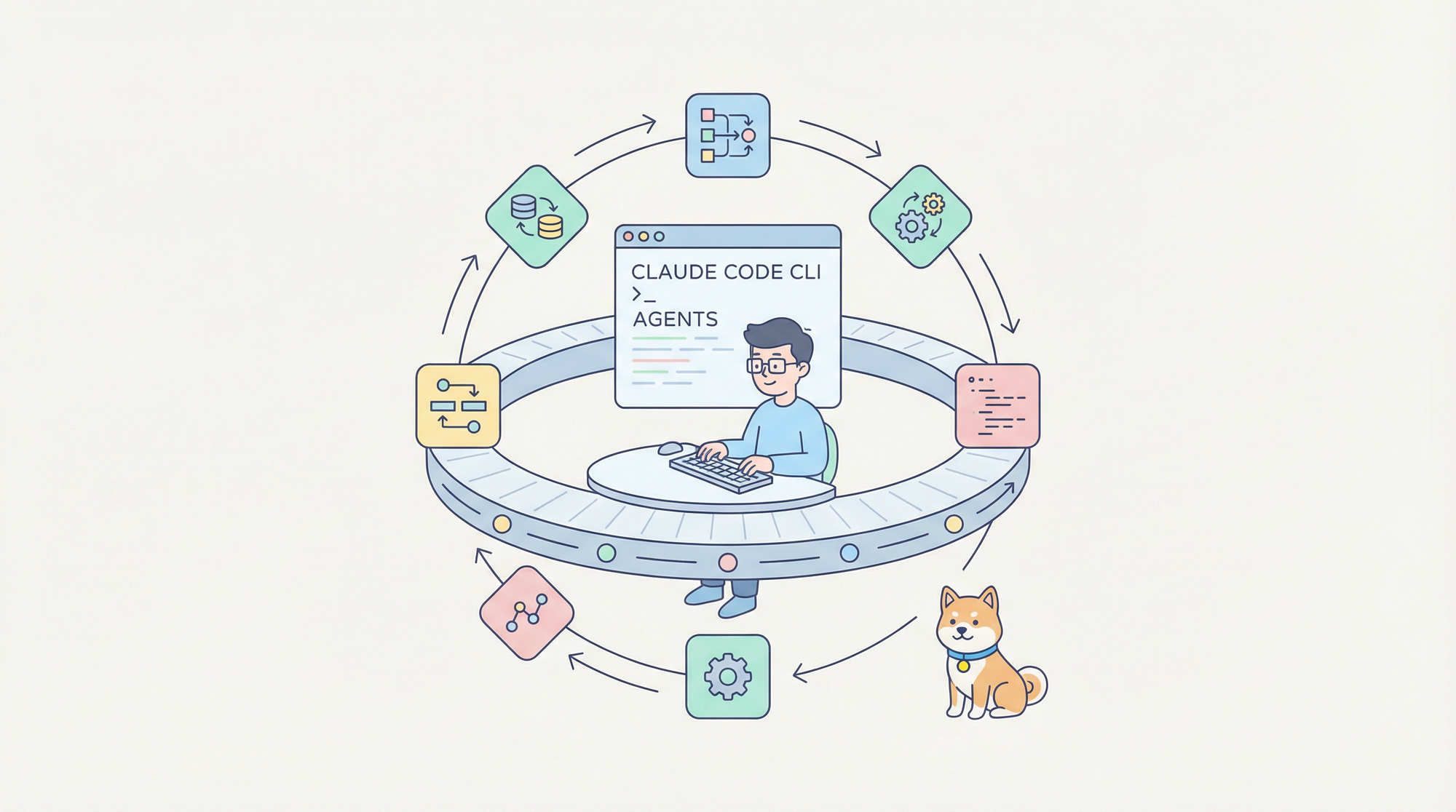You've just filled out a long, important web form a job application, a purchase, a registration. You click "Submit," and for a agonizing second, nothing happens. You nervously click it again. Later, you get two confirmation emails. You've accidentally applied for the job twice, bought two identical items, or created two accounts.
This frustrating experience was a common flaw in early web applications. The solution to this problem is a clever, specific, and often overlooked HTTP status code: 303 See Other.
In the vast world of HTTP status codes, some get plenty of spotlight like the well-known 200 OK or 404 Not Found while others, like 303 See Other, quietly do critical work behind the scenes. The 303 status code is particularly important when it comes to guiding clients to access a different resource after an HTTP method like POST.
While its cousins 301 and 302 are about moving resources, the 303 status code is about orchestrating a safe and predictable user experience after a form submission. It's the server's way of saying, "I've processed your request. To see the result and to prevent you from doing that again, please now go to this new page using a GET request."
It's the digital equivalent of a bouncer at a club checking your name off the list and then directing you through the door. You don't hand your ticket to the bouncer again; you just walk in.
If you're a web developer building anything that involves forms, understanding 303 See Other is a key to creating robust, user-friendly applications. This blog post we’ll break down everything about status code 303 See Other, explain when to use it, and show why it matters in web apps, APIs, and SEO in an approachable style.
And before we dive into the mechanics, if you're building or testing APIs and web applications that handle form data, you need a tool that can accurately simulate and verify these critical post-submission flows. Testing redirect behavior can be a nightmare if you’re not using the right tools. That’s where Apidog comes in. With Apidog, you can easily simulate HTTP responses (like 303), mock APIs, and see exactly how your clients handle redirects. The best part? You can download it for free and start testing your redirects today.
Now, let's explore the purpose, power, and practical application of the HTTP 303 See Other status code.
The Problem: The Dreaded Duplicate Form Submission
To understand why 303 exists, we must first understand the problem it solves. The issue stems from the basic mechanics of the web.
- A user fills out a form on a web page. The form's method is
POST(because it's sending data to be processed). - The user clicks "Submit." The browser sends a
POSTrequest to the server. - The server processes the data (e.g., saves it to a database, charges a credit card).
- The server needs to show the user a result page (e.g., "Success!" or "Thank you for your order!").
The Flawed Approach: In the early web, the server might simply respond to the POST request with a 200 OK and the HTML for the success page.
The Problem: What happens if the user refreshes the page? The browser displays a warning: "Confirm Form Resubmission." If the user confirms, the browser sends the same POST request again. This could lead to a duplicate charge, a duplicate application, or duplicate data in the database.
The 303 See Other status code was introduced to break this cycle and provide a safe, predictable pattern.
What Does HTTP 303 See Other Actually Mean?
The 303 status code indicates that the server is redirecting the user agent to a different resource, which is meant to provide a response to the original request. Crucially, the redirect must be performed using the GET method, even if the original request was a POST.
The official RFC 7231 specification states:
The 303 response indicates that the server is redirecting the user agent to a different resource, as indicated by a URI in the Location header field, which is intended to provide an indirect response to the original request.
In simple terms: "I got your POST data and handled it. Now, please use a GET request to fetch the result page from this new URL."
A typical 303 response looks like this:
HTTP/1.1 303 See OtherLocation: /thank-you.htmlContent-Type: text/htmlContent-Length: 125
<html><head><title>303 See Other</title></head><body><center><h1>303 See Other</h1></center></body></html>
The key part is the Location: /thank-you.html header. This tells the browser where to go next using a GET request. Unlike other redirect codes, 303 explicitly requires the client to use the GET method on the redirected resource.
Why Does 303 See Other Exist?
You might ask, why not just use 301 or 302 redirects?
Here’s the crux:
- 301 Moved Permanently and 302 Found don’t clearly specify whether to repeat the original HTTP method or change to GET on redirection.
- Historically, some browsers handled 302 inconsistently, sometimes repeating the original method.
- 303 See Other was introduced in HTTP/1.1 to provide a clear, standardized way to instruct clients to follow with a GET request irrespective of the original HTTP method.
This helps solve ambiguity and prevents unintended side effects like resubmitting POST forms during redirection.
Why 303 Matters in APIs
For APIs, 303 is a lifesaver. Here’s why:
- It avoids unintended duplicate operations (like double-charging a payment).
- It gives clients a clear endpoint to retrieve results.
- It works great for long-running or asynchronous tasks.
In short, 303 adds predictability to client-server interactions.
The "POST/Redirect/GET" Pattern: How 303 Works
The 303 status code is the cornerstone of the POST/Redirect/GET (PRG) pattern, a fundamental web development pattern for handling form submissions correctly.
Let's walk through the flow:
- POST: The user fills out a form and clicks submit. The browser sends a
POSTrequest to/process-form.
POST /process-form HTTP/1.1Host: www.example.comContent-Type: application/x-www-form-urlencoded
name=Jane+Doe&email=jane@example.com
2. Process: The server receives the POST data, validates it, saves it to the database, and processes it.
3. 303 See Other: Instead of returning HTML, the server responds with a 303 status and a Location header pointing to a success page.
HTTP/1.1 303 See OtherLocation: /confirmation
4. GET: The browser sees the 303 status and automatically makes a brand new, GET request to the URL in the Location header.
GET /confirmation HTTP/1.1Host: www.example.com
5. 200 OK: The server responds to this new GET request with the HTML for the confirmation page.
HTTP/1.1 200 OKContent-Type: text/html
<html>...Thank you for your submission!...</html>
6. Safe Refresh: The user's address bar now shows /confirmation. If they refresh the page, the browser simply repeats the harmless GET request to /confirmation. It will not re-submit the original POST data. The duplicate submission problem is solved!
SEO Implications of 303 Redirects
Unlike 301 or 302, the 303 See Other redirect isn’t really used in SEO scenarios. It’s mainly for functional workflows like form submissions and API responses.
That said, search engines will generally follow the redirect. But they won’t treat it like a permanent signal the way they do with 301.
If you’re optimizing for SEO, don’t use 303 use 301 for permanent redirects.
303 vs. 302 Found: A Critical Distinction
This is the most common point of confusion. Why use 303 instead of the more familiar 302?
The difference is subtle but critically important. The original HTTP/1.0 specification for 302 Found was ambiguous. It didn't explicitly state what method the client should use for the redirected request. As a result, many browsers would perform the redirect using the original method (POST). This completely defeated the purpose of preventing duplicate submissions!
The 303 See Other code was introduced in HTTP/1.1 to remove this ambiguity. Its specification is crystal clear: the response to the redirected request is always retrieved using GET.
302 Found: "The resource is temporarily over there. Go get it." (Browser may re-use the original POST method).303 See Other: "The response to your request is over there. Use GET to fetch it." (Browser must use the GET method).
For the PRG pattern, 303 is the semantically correct and guaranteed-safe choice.
When to Use HTTP 303 See Other
You should use a 303 redirect in one primary scenario:
After processing any non-idempotent POST request that should not be repeated.
- Form submissions (contact forms, registrations, logins)
- Purchase checkouts
- Any action that changes state on the server (e.g., deleting an item could use a POST request followed by a 303 to a GET listing page)
You should not use 303 for:
- Permanent moves (use
301) - Temporary moves where the method should be preserved (use
307 Temporary Redirect) - Simple, idempotent GET redirects
Common Use Cases for 303 See Other
- Preventing form resubmissions after POST requests.
- Redirecting users after file uploads.
- Payment workflows to avoid duplicate charges.
- Asynchronous APIs where results are fetched later.
- RESTful APIs when directing clients to a result resource.
Real-World Example: Using 303 After a POST Request
Imagine a user submits a form on your website. Upon processing the data, instead of showing a direct response, your server responds with a 303 See Other to redirect the client to a confirmation page.
Here’s how it works step-by-step:
- Client sends a POST request with form data.
2. Server processes the submission successfully.
3. Server responds:
textHTTP/1.1 303 See Other Location: <https://example.com/confirmation>
4. Client automatically sends a GET request to the /confirmation URL.
5. User sees the confirmation page.
This pattern helps prevent duplicate form submission issues if users reload the confirmation page.
Best Practices for Using 303 See Other
Here are some tips if you plan to use 303 in your web apps or APIs:
- Use 303 primarily when redirecting after a POST or non-GET method.
- Always specify the
Locationheader with a fully qualified URL or a valid relative URL. - Avoid using 303 for permanent URL changes use 301 instead.
- Be sure the client understands to send a GET request on redirect.
- Test your redirects across various browsers and clients to ensure compliance.
How Clients Handle 303 See Other
Upon receiving a 303 response:
- Browsers automatically follow the
LocationURL using GET. - APIs and clients should respect this behavior and issue a GET request.
- This helps prevent problems like resubmitted POST data or unintended side effects.
Technical Structure of a 303 Response
A typical 303 response header might look like this:
textHTTP/1.1 303 See Other Location: <https://example.com/resource/123> Content-Length: 0
Usually, the body is empty since the response’s purpose is to redirect.
Testing the PRG Pattern with Apidog

Testing this flow is crucial to ensure your application avoids the duplicate submission pitfall and you want to verify that your server correctly sends 303 responses and that clients behave as expected. Apidog is the perfect tool for this job. With Apidog, you can:
- Simulate the POST Request: Easily craft a POST request with form-data or JSON body to your form processing endpoint.
- Validate the 303 Response: Send the request and verify that the server responds with a
303status code, not a200or a302. - Check the Location Header: Ensure the
Locationheader is present and points to the correct confirmation page URL. - Automate the Redirect: Apidog can be configured to automatically follow the redirect and send the subsequent GET request to the
LocationURL. - Verify the Final Result: Check that the final GET request to the confirmation page returns a
200 OKwith the expected success message.
This end-to-end testing ensures your entire form handling workflow is robust and user-friendly. With Apidog, you can simulate complex workflows without touching production servers. You can download Apidog for free and start testing today, improving your API’s reliability regarding HTTP redirects.
Common Mistakes to Avoid With 303 Redirects
- Using 303 in place of 301 or 302 for permanent or temporary URL changes.
- Forgetting to provide a
Locationheader. - Sending a non-GET method on redirect despite 303’s specification.
- Mixing up status codes and confusing client behavior.
303 See Other in RESTful API Design
In REST APIs, 303 can be handy after resource creation or non-idempotent operations:
- After a POST creating a new resource, respond with 303 pointing to the resource’s URI.
- This helps ensure clients fetch the newly created resource using GET.
- It supports safe navigation and workflow control in stateful interactions.
Troubleshooting 303 Redirect Issues
If redirects aren’t working as expected:
- Confirm the server sends the correct 303 status and Location header.
- Check the client respects the requirement to follow with GET.
- Watch out for infinite redirect loops.
- Use tools like Apidog to trace requests and responses.
Implementation Examples
Here’s how you might implement a 303 redirect in various backend frameworks:
Node.js (Express):
javascript
app.post('/process-order', (req, res) => {
// 1. Process the order, save to DB, etc.
processOrder(req.body);
// 2. Respond with 303 and redirect to confirmation page
res.redirect(303, '/order-confirmation');
});
Python (Django):
from django.shortcuts import redirect
def process_form_view(request):
if request.method == 'POST':
# 1. Process the form
form = MyForm(request.POST)
if form.is_valid():
form.save()
# 2. Use HttpResponseRedirect which typically uses 302,
# but you can set status explicitly for 303
from django.http import HttpResponseRedirect
response = HttpResponseRedirect('/success/')
response.status_code = 303
return response
PHP:
<?php
if ($_SERVER['REQUEST_METHOD'] === 'POST') {
// 1. Process the POST data
process_form_data($_POST);
// 2. Redirect with a 303 See Other
header('HTTP/1.1 303 See Other');
header('Location: /thank-you.php');
exit();
}
?>
303 vs 308: Permanent Redirects With Method Preservation
Sometimes 303 is confused with 308 Permanent Redirect, but they serve different purposes:
- 303: Temporary redirect that changes method to GET.
- 308: Permanent redirect preserving the HTTP method.
Use 303 primarily for temporary redirects after methods other than GET; use 308 for permanent redirects preserving method.
Conclusion: The Mark of a Professional Web Developer
The HTTP 303 See Other status code is more than just a technical detail; it's a hallmark of thoughtful, professional web development. It represents a deep understanding of the HTTP protocol and a commitment to creating a safe and predictable experience for the user.
The 303 See Other status code might not be the most famous redirect, but it solves a very specific problem: making sure clients don’t repeat potentially dangerous requests like POST. Instead, it cleanly redirects them to a GET resource where the results can be safely retrieved. By properly implementing and leveraging 303 redirects, you can prevent duplicate form submissions, guide users smoothly to new pages, and improve the robustness of your APIs and applications.
While its effect in the browser is identical to other redirects, its semantic meaning provides a crucial guarantee: that a non-idempotent action will not be accidentally repeated.
Implementing the POST/Redirect/GET pattern with 303 See Other is a simple yet powerful way to elevate the quality and robustness of your web applications. For developers, especially those working with forms, payments, and APIs, 303 is a must-know. But don’t just read about it test it in practice. Testing your applications’ redirect logic is critical, and that’s why you should download Apidog for free. Apidog makes it easy to test, document, and understand responses involving 303 and all other HTTP codes, so your API workflow is more transparent, reliable and help you to simulate 303 redirects, mock API behavior, and ensure your systems handle them gracefully.



